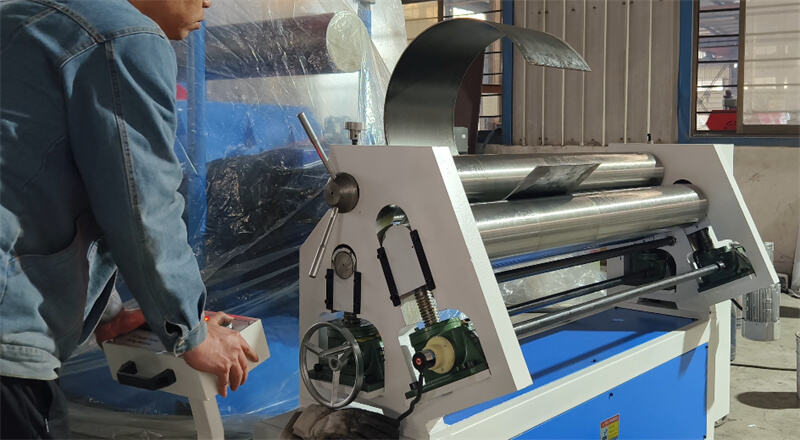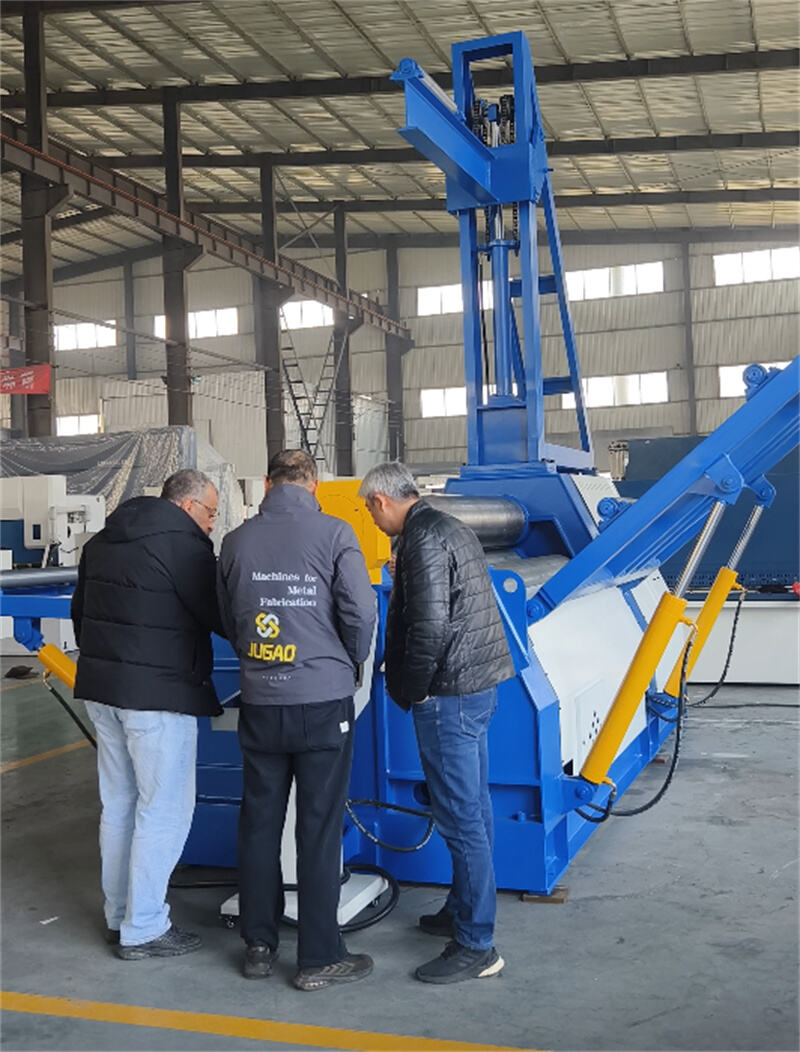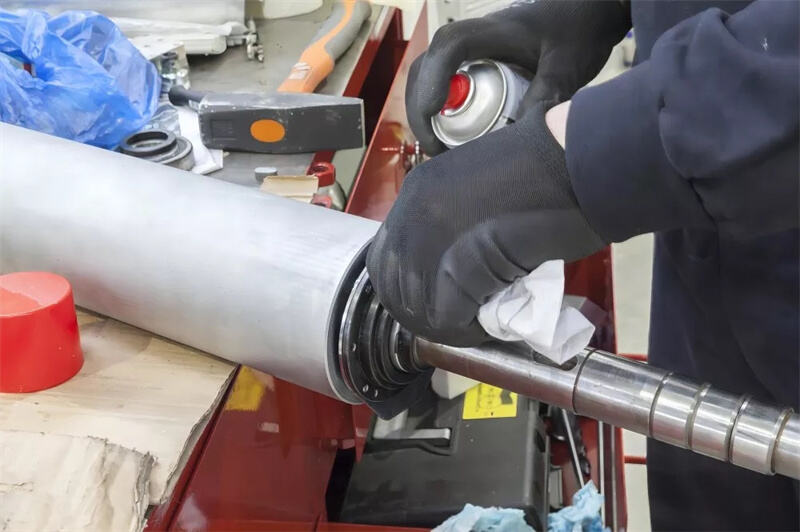Factors Influencing the Environmental Performance of Plate Rolling Machines
Table of Contents
Energy Consumption Across the Rolling Cycle
Motor Efficiency and Variable-Speed Drives
Hydraulic vs. All-Electric Power Trains
Idle-Time Energy Losses and Standby Modes
Material Utilization and Waste Minimization
Plate Nesting Strategies to Reduce Off-Cuts
Precision Control to Avoid Re-Rolling Scrap
Recycling and Reusing Lubricants and Coolants
Emission Sources Beyond Electricity
Hydraulic Oil Leaks and Volatile Organic Compounds
Noise Pollution and Workplace Environment
Life-Cycle Carbon Footprint of Wear Parts
Maintenance Practices That Preserve Eco-Efficiency
Predictive Maintenance for Optimal Bearing Performance
Eco-Friendly Lubricants and Biodegradable Oils
End-of-Life Parts Management and Circularity
Automation and Digital Monitoring for Sustainable Operation
Real-Time Energy Dashboards
Adaptive Roll Alignment Algorithms
Integrating Rolling Machines into a Smart Factory EMS
FAQ
How can I quickly measure the environmental performance of rolling machines in my workshop?
What upgrades provide the fastest payback for reducing rolling machine power consumption?
How do I minimize hydraulic oil leaks on older four-roll machines?
Is it worth investing in an all-electric plate rolling machine?
Conclusion
Contemporary evaluation of plate rolling lines prioritizes environmental performance beyond maximum throughput. For operations seeking to reduce energy costs, minimize waste, and decrease the carbon footprint of plate bending processes, this analysis identifies critical factors. The following sections detail key elements influencing rolling machine eco-efficiency to facilitate immediate improvements and strategic long-term planning.

Energy Consumption Across the Rolling Cycle
Motor Efficiency and Variable-Speed Drives: Primary drive motors constitute the largest electricity load in plate rolling machinery. Upgrading standard induction motors to high-efficiency IE3/IE4 units with modern Variable-Speed Drives (VSDs) reduces power demand by 8–15%. VSDs enable real-time torque matching to load requirements, eliminating wasteful "full-throttle" operation common in legacy equipment and significantly decreasing power consumption during light-duty passes.
Hydraulic vs. All-Electric Power Trains: Conventional four-roll plate bending machines utilize continuously running hydraulic pumps, whereas all-electric designs activate servo actuators only during movement. Comparative testing demonstrates all-electric models reduce energy consumption per ton by up to 35 kWh (35%). For new installations prioritizing sustainability, conduct a lifecycle cost analysis comparing hydraulic and servo-electric architectures.
Idle-Time Energy Losses and Standby Modes: Operators frequently leave machines energized during workpiece setup. Implementing intelligent standby logic—including automatic pressure unloading and low-RPM sleep modes—reduces idle consumption to near-zero levels. A mere 5-minute reduction per cycle can yield annual savings of thousands of kWh, lowering operational costs and Scope 2 emissions.
Material Utilization and Waste Minimization
Plate Nesting Strategies to Reduce Off-Cuts: Suboptimal nesting generates the most significant steel waste in rolling operations. Importing DXF job files into nesting optimization software routinely increases material yield by 3–7%. Reduced virgin metal consumption decreases upstream steel production emissions and lowers raw material costs.
Precision Control to Avoid Re-Rolling Scrap: Enhanced position feedback (≤ 0.05 mm resolution) and closed-loop roll parallelism control virtually eliminate "first-piece" scrap associated with legacy machine calibration. Laser-based roll alignment systems sharply reduce re-rolling requirements, directly improving environmental performance through decreased scrap remelting and transportation.
Recycling and Reusing Lubricants and Coolants: Rolling emulsions and EP greases often become hazardous waste. Filtration skid installations enable recovery of up to 80% of cutting fluids, tripling lubricant service life. This reduces chemical procurement, waste disposal volumes, and improves shop floor cleanliness.

Emission Sources Beyond Electricity
Hydraulic Oil Leaks and Volatile Organic Compounds: Each liter of leaked hydraulic fluid presents slip hazards and releases Volatile Organic Compounds (VOCs). Mitigation strategies include upgrading O-rings to bio-compatible elastomers and adopting readily biodegradable ester-based hydraulic oils, which degrade 60% faster in soil/water environments, reducing long-term environmental liability.
Noise Pollution and Workplace Environment: Elevated noise levels represent a frequently overlooked environmental factor. Installing polyurethane-backed safety guards and variable-displacement pump dampeners reduces A-weighted sound pressure levels by 6–10 dB(A). Noise reduction minimizes community complaints and enhances operator well-being.
Life-Cycle Carbon Footprint of Wear Parts: Replacement rolls and bearings embody embedded carbon from raw material extraction, machining, and logistics. Wear-resistant clad rolls and induction-hardened rolls offering 30% extended service life decrease replacement frequency and associated carbon emissions.
Maintenance Practices That Preserve Eco-Efficiency
PredictiveMaintenanceforOptimalBearing Performance: Cloud-connected vibration sensors provide failure warnings weeks in advance. Early intervention prevents catastrophic breakdowns that increase energy consumption by ≥5% and generate substantial scrap material plus emergency freight emissions.
Eco-Friendly Lubricants and Biodegradable Oils: Transitioning to plant-based hydraulic fluids and low-toxicity greases prevents hazardous substance discharge into wastewater systems. Always verify seal compatibility and update Material Safety Data Sheets (MSDS) for compliance.
End-of-Life Parts Management and Circularity: Worn rolls should undergo local remanufacturing (resurfacing) instead of landfilling. Such circular economy practices preserve ≤70% of original material value, shorten supply chains, and enhance rolling machine sustainability.
Automation and Digital Monitoring for Sustainable Operation
Real-Time Energy Dashboards: Energy meters on drives and pumps feed data into dashboards displaying kWh-per-job metrics. Visualizing energy spikes prompts operators to identify inefficiencies, fostering continuous improvement culture.
Adaptive Roll Alignment Algorithms: Advanced CNC systems deploy laser sensors to detect real-time roll deflection, dynamically adjusting bending pressure. Fewer corrective passes decrease energy usage and mechanical wear.
Integrating Rolling Machines into a Smart Factory EMS: Connecting rolling cells to an Energy Management System (EMS) enables scheduling of high-load operations during off-peak tariffs or onsite solar generation peaks, further reducing plant carbon intensity.
FAQ
How can I quickly measure the environmental performance of rolling machines in my workshop?
Conduct an energy audit: Install temporary power loggers for one operational week to record kWh per ton rolled, benchmarked against industry standards. Complement with material yield analysis to quantify scrap rates.
What upgrades provide the fastest payback for reducing rolling machine power consumption?
Retrofitting VSDs to hydraulic pumps and implementing smart standby controls typically achieve payback within 12–18 months via direct electricity savings.
How do I minimize hydraulic oil leaks on older four-roll machines?
Replace degraded hoses/seals with high-grade FKM (Viton®) or HNBR components, establish preventive replacement schedules, and transition to readily biodegradable oils to mitigate environmental impact if leaks occur.
Is it worth investing in an all-electric plate rolling machine?
For high-volume operations in regions with elevated electricity costs, the 30–35% energy reduction can offset the premium purchase price within 3–5 years while substantially improving overall eco-efficiency.

Conclusion
Enhancing the environmental performance of plate rolling machinery requires an integrated approach spanning drive technology, material flow optimization, disciplined maintenance, and digital oversight. By prioritizing the high-impact areas outlined—energy efficiency, waste reduction, emission control, and predictive maintenance—operations can concurrently reduce carbon footprints and operating expenses. To advance your sustainability initiatives, contact the JUGAO engineering team for a customized eco-audit or explore our technical resource hub. Let's achieve more sustainable—and profitable—metal forming.
Key Professional Terminology Used:
Plate Rolling Machine / Plate Bending Machine
Variable-Speed Drive (VSD)
Servo Actuators
Four-Roll Plate Bending Machine
Torque Matching
Workpiece Setup
DXF File
Material Yield
Position Feedback (≤ 0.05 mm)
Closed-Loop Roll Parallelism
EP Greases (Extreme Pressure)
Volatile Organic Compounds (VOCs)
A-weighted Sound Pressure Level [dB(A)]
Wear-Resistant Cladding
Induction-Hardened Rolls
Predictive Maintenance (PdM)
Material Safety Data Sheets (MSDS)
Circular Economy
Energy Management System (EMS)
Roll Deflection
Bending Pressure
Payback Period
FKM (Fluorocarbon Rubber)/HNBR (Hydrogenated Nitrile Rubber)
Eco-Audit


















































